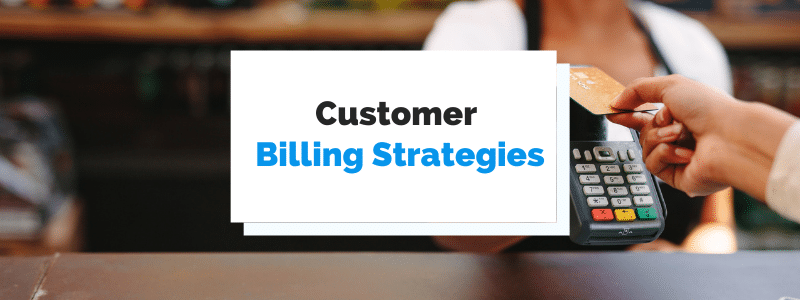Setting up an effective online customer billing process is an essential step in protecting your business from cash flow issues and ensuring financial success.
Service-based businesses can use specific billing strategies to ensure they’re paid on time, every time, including dismantling billing silos, personalizing invoice intervals, and other tactics we’ll cover in this article.
- Breaking Down Billing Silos
- Personalizing Invoicing Intervals
- Staying in Touch With the Customer during the Billing Process
- Creating a Proactive Billing Strategy
- Following the 3 Fs of Collection
- Establishing a Centralized Debt Collection System
- Conclusion
Breaking Down Billing Silos
Businesses create billing silos when they use channels and payment systems that are unable to communicate with one another, and these silos can negatively impact their user experience in various ways.
For example, buyers might have to use different user log-ins for different channels, or they may have to jump from your website to another page to pay, an unnecessary inconvenience.
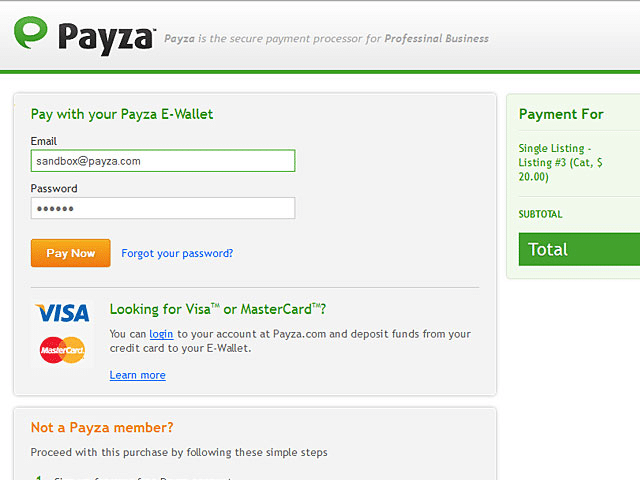
Source: flynax
Unfortunately for buyers, these silos are prevalent in businesses. That means doing away with them is a great way to differentiate your digital experience.
That’s something Kristina LaRocca-Cerrone, Director, Advisory in the Gartner for Marketers practice, says will help you get new customers via word of mouth:
“When customers do something differently with confidence after a digital experience, that creates a lasting brand impression and inspires customers to share their memorable experience with others.”
Payment systems that communicate with another will enable you to collect more comprehensive customer data. This can help you customize payment experiences to fit each client’s preferences.
Plus, you can even drill down into the data and discern why specific customers prefer different payment options at different times.
For instance, you might find that your older customers normally prefer paying over the phone, but online during holiday weeks—and why they prefer this.
With an understanding of customer decision-making, you can then create strategies and incentives to nudge buyers towards your business’s preferred payment channel.
To remove billing silos and integrate your channels, take this three-pronged approach:
| Assess Your Channels | Find all the touchpoints between your business and customers and check if all channels are connected or separate. |
| Leverage Technology | With the help of software, create a mobile-first billing system that allows integration of all your channels. Make sure the tech is flexible and can easily integrate new channels as they arise. |
| Establish Goals | Create goals like “reduce cart abandonment” or “increase online mobile payments” and then track metrics associated with those goals. |
For a more exhaustive explanation of the process, check out Payment Week’s article on removing billing silos.
Keep in mind that there might also be silos plaguing your internal billing processes. The billing, support, and collection teams may all be operating from different information, which can sometimes make one group take an action that hurts the other because of their competing goals.
For example, your customer support staff might allow a client to extend their invoice date by a month to hit their client satisfaction KPIs, which then frustrates a collection team member’s efforts to reduce the number of outstanding invoices to meet their quota and increase cash flow.
These teams need to be on the same page.
To do this, first, make sure each team is getting the same information.
Purchasing a robust CRM or an enterprise content management system like OnBase will help you achieve this goal, especially with its case management feature:

Source: Naviant
Second, hold frequent meetings between department heads of these three teams so that they can each plan KPIs that support each other’s progress and the company’s main objectives.
When your payment channels are integrated and your internal billing process is free of silos, you’ll more effectively collect payment from your customers, and maybe even improve cross-departmental camaraderie.
Personalizing Invoicing Intervals
It’s a best practice to send your customers their invoices at the right time. Ideally, that should happen in the morning, just before they sit down for the workday.
That way, the email will be near the top of their inbox when they begin work and they’ll be more likely to see and pay it.
However, you can’t just choose to send every invoice out at 8 AM every Monday to all your clients. Each one has a different schedule.
For instance, what if you had one client in Italy and another in the eastern US? One of them might receive invoices during lunchtime, tell themselves they’ll get to it later, and then completely forget about it.
Therefore, it’s important to personalize each invoice interval to fit each client’s schedule and needs. The best way to figure this out is to ask them when they’d like to receive invoices.
They may tell you they handle accounts payable on Friday afternoons, and would love it if you could send them invoices Friday mornings.
If you’re using an automated billing system like Regpack, you can set those invoices to go out automatically on a recurring basis:
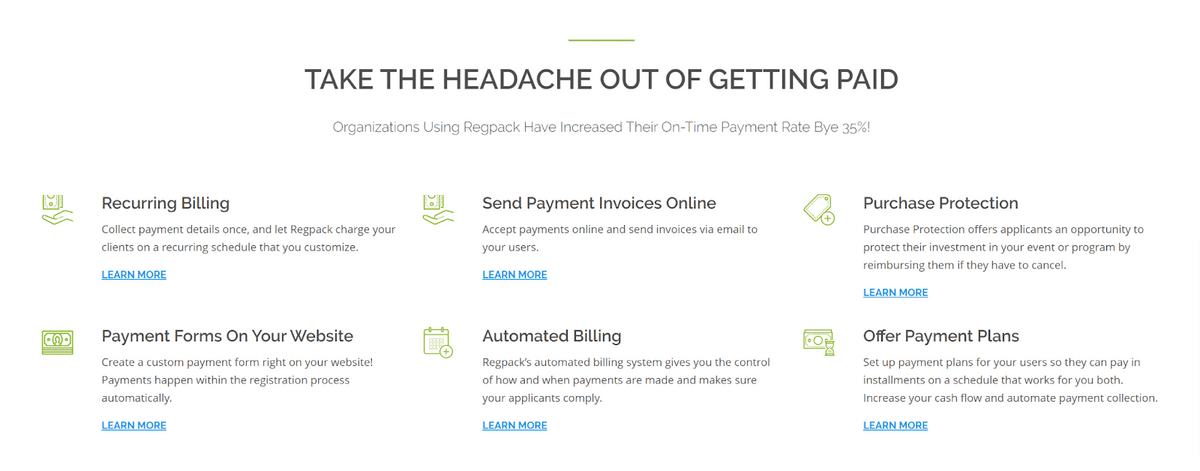
Source: Regpack
Or, if you’re using a manual approach, you can put a recurring note in your online calendar to invoice the specific client, like in Google Calendars shown below, which shows it occurring weekly on Friday at 12 PM:
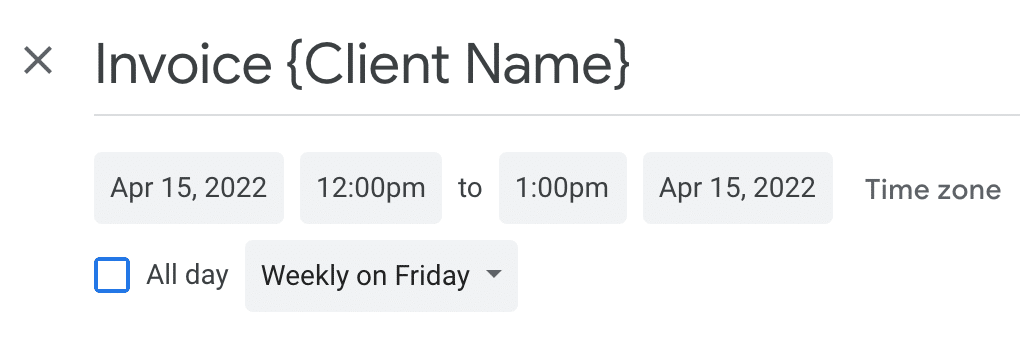
Source: Google
Before you accept the client’s desired interval, first make sure that the billing time the client has suggested is a time of day when the person in charge of approving the invoice is consistently available.
If not, you may experience delays in payment or invoices that fall through the cracks.
Ultimately, when you personalize these invoicing intervals, your customers will enjoy the experience, and you’ll have less administrative work and reach outs to do regarding your billing.
For more on effective invoicing, check out our article on how to invoice customers online, where we share tips for doing this the right way.
Staying in Touch With the Customer during the Billing Process
Businesses that communicate early and often with their customers are more likely to receive their payments on time. As a best practice, you should reach out at least three times before an outstanding invoice becomes overdue.
Below is an example of the three attempts at getting in touch with clients after sending an invoice:
| Day of Sending Invoice | Send a courtesy email or message to inform the client that you’ve sent the invoice. Ask them to confirm its receipt. |
| 3 Days Later | If the client hasn’t responded to your message, send a quick follow-up to ensure they’ve seen the invoice. |
| Invoice Due Date | Check in to see if the client will be paying on time. If they’re having trouble paying, it’s important that you know sooner than later so you can plan accordingly. |
Typically, sending your billing reminders over text or email is the quickest and most cost-effective way to communicate with your clients. They’ll appreciate the informality and simplicity of the exchange.
Making a phone call is often unnecessary until the invoice is past due. Before the due date, a call might seem a bit aggressive to the client. The one time it might be appropriate is if you asked the client to confirm receipt of a large invoice, followed up, and still received no response.
To further reduce the time it takes to communicate about billing, try automating your billing outreach by using a tool like Regpack.
It comes with an email communication system that allows users to set up billing reminder emails that go out to clients automatically based on conditions you set.
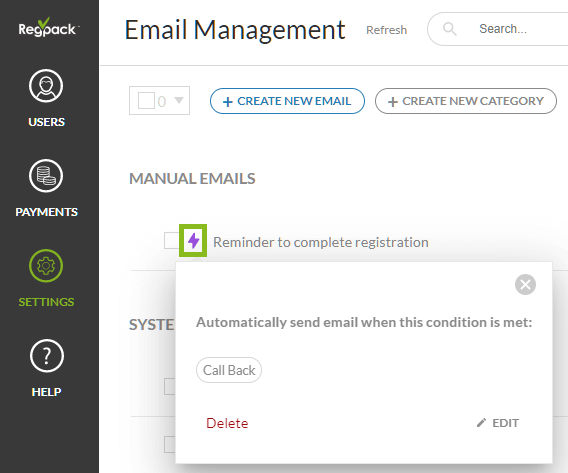
Source: Regpack
For example, you might set up a templated, automatically personalized, reminder email to send 3 days after all invoices are sent out.
As a pre-emptive strike on the probability of future billing issues, you should also tell your clients how you handle billing during your sales cycle.
That way they know what’s coming and can prepare, and if they find your method disagreeable (which is unlikely) they can remove themselves from the sale, saving you from future headaches.
While frequency is the most important attribute of billing communication, it’s also important that you write your invoices using simple vocabulary while avoiding jargon, and use firm yet friendly language in your invoice reminders, as done below:
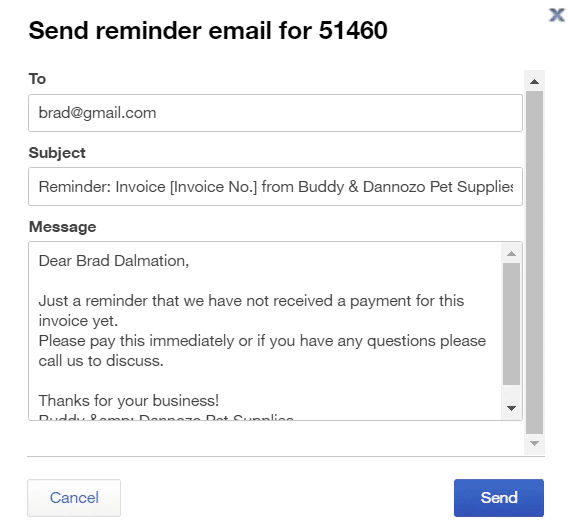
Source: Quickbooks
There are many reasons why a customer might not be keeping up with their payments.
Your best chance to secure the funds that are owed is to stay in contact with your customer so you’re aware of any issues in the payment process.
Creating a Proactive Billing Strategy
A proactive billing strategy ensures that you receive payments on time from your customers and therefore have the available cash necessary to run your business.
There are a few best practices you can easily implement to make your billing strategy more proactive:
- send your invoices right away
- set billing expectations beforehand
- capture your client’s payment method
- offer self-service options
First, ensure that you’re sending invoices immediately after a service is rendered or a deliverable is sent. This ensures your clients will have a big heads up to pay you before the due date comes.
Second, try to set expectations around payment with your customers early in the relationship. Let them know your billing cycle (on receipt, net-30, etc.) so that they can budget and pay you by the due dates.
Third, attempt to capture a payment method on file as soon as possible, whether that’s a client’s credit card or banking account information for ACH/e-check payments. This is especially critical if you bill on a recurring basis.
Better yet, if a customer gives you this payment method, you can offer them a way to set up automatic payments in your billing system, which will make it impossible for them to forget to pay—unless their credit card changes, of course.
Below is an example of an auto-pay set up in Regpack:
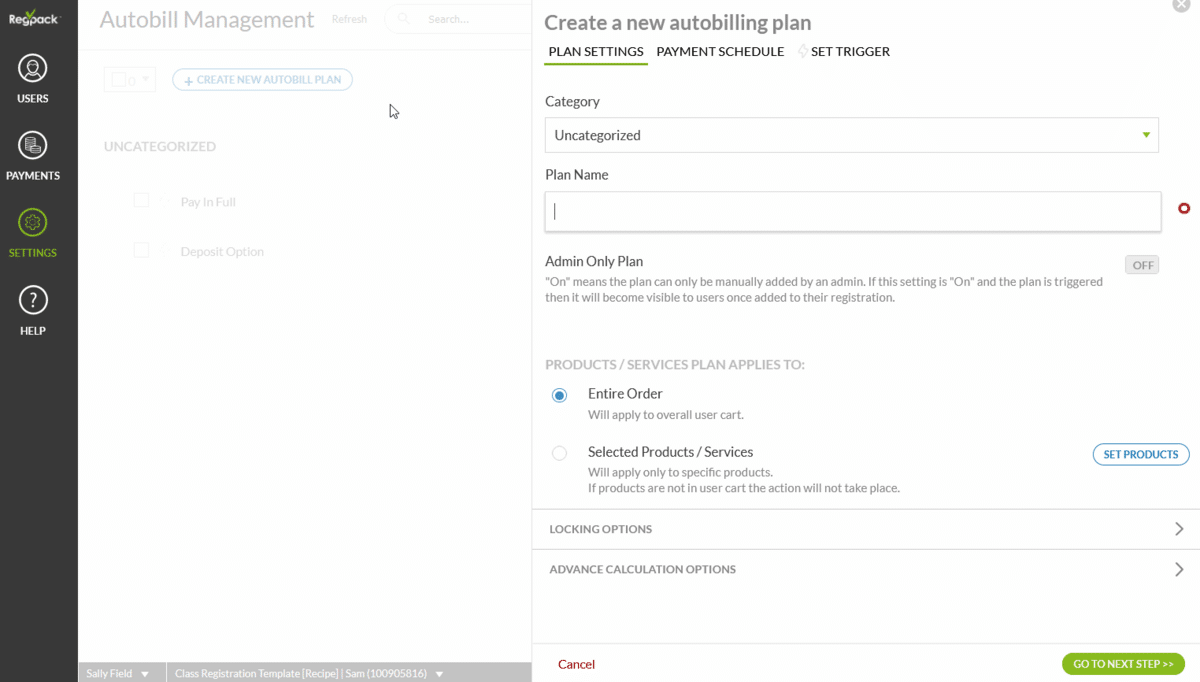
Source: Regpack
Auto-pay brings us to our next point: offer self-service options. People like having the ability to pay their bills through their preferred channel and on their own schedule.
So, provide enough ways to pay that every customer can find a method that agrees with them and their routine:
- paying over a phone call or in your store
- paying over text
- paying online
- automated payments
A proactive billing strategy that offers your clients flexibility in how they pay will increase both your collection speed and your customers’ satisfaction.
Following the 3 Fs of Collection
In certain situations, you’ll have to collect overdue payments from a customer. Reaching out to them and asking for your money is a necessary part of doing business.
Without money coming in according to plan, you may suffer cash flow issues, which are infamous for hurting small businesses.
In fact, cash flow mismanagement is the reason 82% of businesses fail. It’s therefore absolutely crucial to get a handle on collections.
Ethically speaking, collecting your payment is also the fair thing to do. You’ve delivered on your end of the bargain and provided excellent service.
Now it’s time for them to do their part. It’s important to go into calls with this mindset so that you can speak assertively and influence action.
To ensure your collection calls go well, follow the three Fs: firm, friendly, focused.
| Firm | Every call you should schedule a firm date and time for the next step, whether that’s full payment, the start of a payment plan, or just another call to discuss payment. This keeps you progressing towards collection. |
| Friendly | Remain polite and kind throughout the collections process. Customer service is still important. That way the customer will feel comfortable with you, which will lead to better cooperation towards a resolution. |
| Focused | Focus on the goal of collecting the money, and be prepared to rebut common collection objections, which, along with their rebuttals, GrowthForce highlights in their article on collections strategies. |
If you follow these principles, you’ll have a better chance of collecting payment while also maintaining the relationship and perhaps even growing it.
Working with someone through conflict and ending with a fair and mutually beneficial outcome may actually make your relationship stronger.
Establishing a Centralized Debt Collection System
A centralized debt collection system is an online platform where your entire collections staff can view all the accounts using the same database.
Implementing such a database is one of the fastest ways to cut unnecessary debt collection costs, like time spent searching for data, and to increase recoveries with even your most evasive debtors.
When collections employees can search for and find information concerning accounts receivable and a particular customer, such as past interactions or decision-making power, they can create personalized strategies and outreach that lead to a successful collection.
One tool that can help you create this system is Gaviti, a SaaS product built for collections teams that want to collect unpaid invoices faster.
Aside from offering a database that is easy to navigate, it also allows users to create workflows that instruct collections reps to take certain actions based on the status of the unpaid invoice, as shown below:
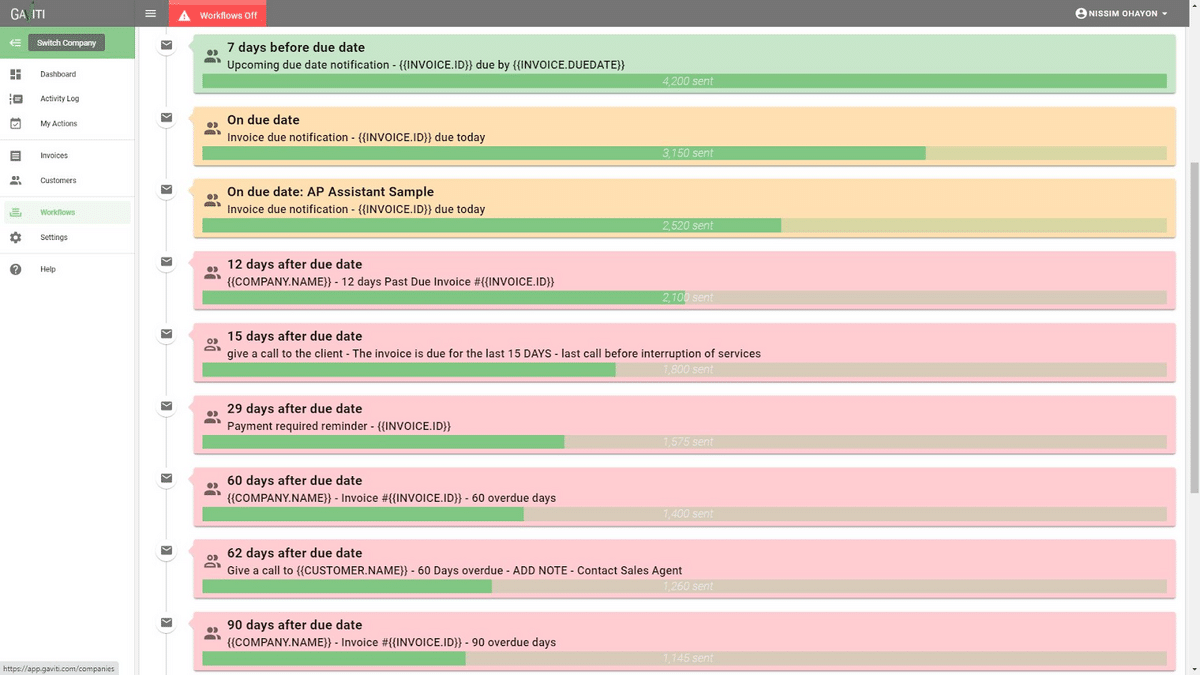
Source: Software Advice
The platform also enables users to automatically send personalized debt collection emails and run reports like risk scoring and payments forecasting that help you predict cash flow.
To conclude, a centralized debt collection system will make your collections process more efficient and help you retrieve the money you’re owed at the lowest cost possible.
Conclusion
If you employ the above billing strategies you’ll create a billing process that collects money quickly, creates visibility and data-backed insights, and, most of all, improves customer and finance team satisfaction.
Before you start implementing these practices, consider checking out our article on even more customer billing tips to further your mastery of the subject.


